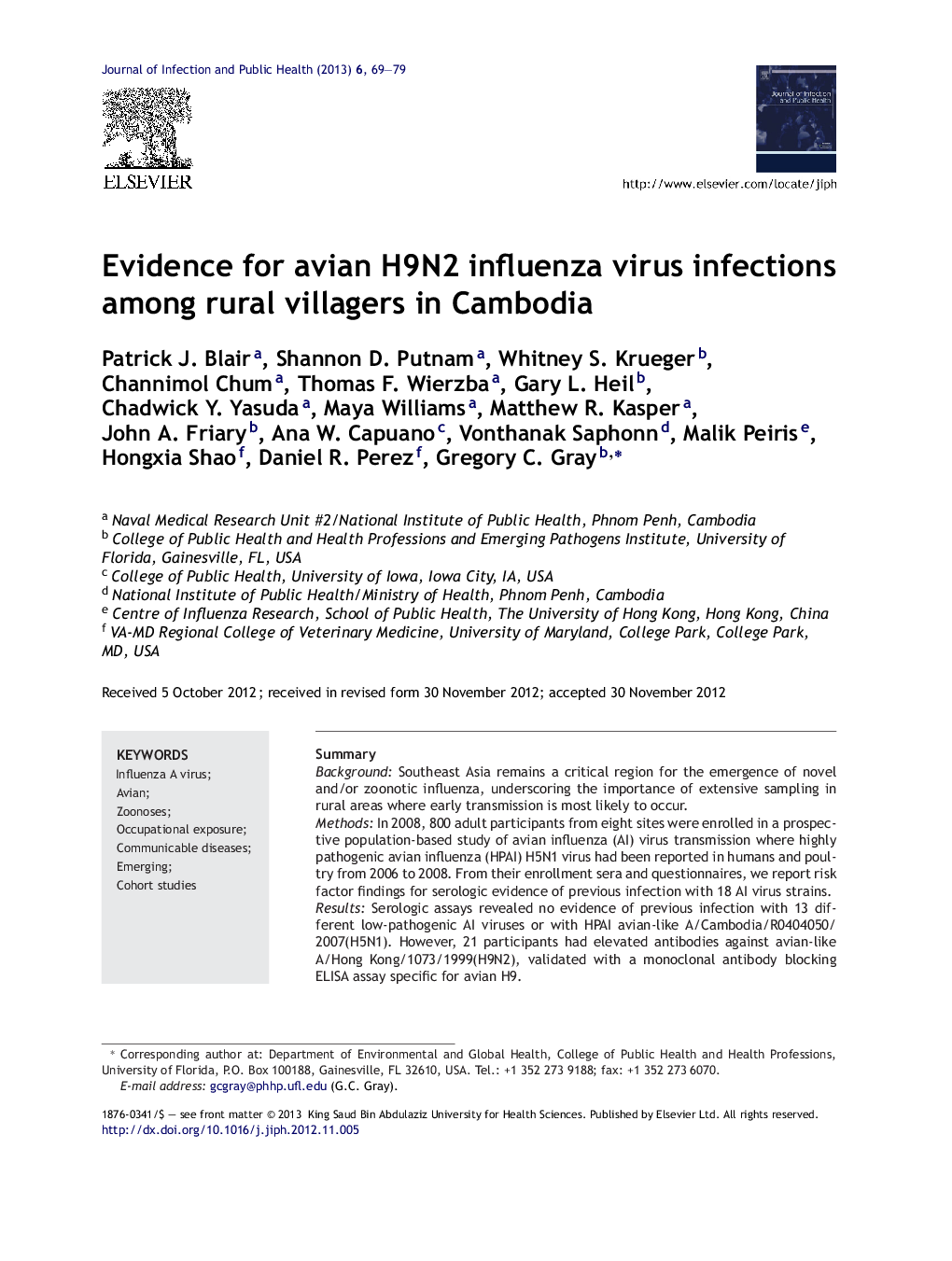| Article ID | Journal | Published Year | Pages | File Type |
|---|---|---|---|---|
| 3405880 | Journal of Infection and Public Health | 2013 | 11 Pages |
SummaryBackgroundSoutheast Asia remains a critical region for the emergence of novel and/or zoonotic influenza, underscoring the importance of extensive sampling in rural areas where early transmission is most likely to occur.MethodsIn 2008, 800 adult participants from eight sites were enrolled in a prospective population-based study of avian influenza (AI) virus transmission where highly pathogenic avian influenza (HPAI) H5N1 virus had been reported in humans and poultry from 2006 to 2008. From their enrollment sera and questionnaires, we report risk factor findings for serologic evidence of previous infection with 18 AI virus strains.ResultsSerologic assays revealed no evidence of previous infection with 13 different low-pathogenic AI viruses or with HPAI avian-like A/Cambodia/R0404050/2007(H5N1). However, 21 participants had elevated antibodies against avian-like A/Hong Kong/1073/1999(H9N2), validated with a monoclonal antibody blocking ELISA assay specific for avian H9.ConclusionsAlthough cross-reaction from antibodies against human influenza viruses cannot be completely excluded, the study data suggest that a number of participants were previously infected with the avian-like A/Hong Kong/1073/1999(H9N2) virus, likely due to as yet unidentified environmental exposures. Prospective data from this cohort will help us better understand the serology of zoonotic influenza infection in a rural cohort in SE Asia.
► Adult cohort involving 800 rural Khmer participants in 9 villages prospectively followed. ► Analysis on sera collected from April–Oct 2008 conducted for evidence of human and zoonotic influenza. ► Enrollee serological assays revealed no reactivity against A/H5N1. ► Serological reactivities against two LPAI viruses, A/H2N2 and A/H9N2, demonstrated elevated titers in 109 and 21 individuals, respectively. ► Study illustrates the importance to understand exposure risks/infections in populations exposed to possible zoonotic influenza.
